Company Updates
Level Up for the New Year: Tips for Retailers to Take Home in 2023

Retailers and consumers are bracing for continued economic headwinds in 2023. The pandemic and a changing world have caused fundamental shifts in how people live, work, and move about their daily routines – impacting many industries, including grocery.
Instacart executives share their thoughts on trends grocers should prepare for in the new year.
Make affordability the #1 priority
As inflation strains people’s budgets, consumers are looking for more affordable brands, buying groceries on-sale, and turning to non-perishable pantry items and frozen foods to try and stretch their dollars.
“Retailers that invest in affordability will be laying the foundation for success – not just in the current environment where inflation is driving price increases, but for the long term,” shares Ryan Hamburger, Vice President, Retail Partnerships at Instacart. “Customers who spent $100 last year still spend $100 today, but now they’re headed home with fewer items in their basket. Grocers that offer the highest quality items at the lowest possible price will win customer loyalty in 2023.”
“Grocers can offer more affordability and differentiation through private label brands, and must strike the balance between private label and CPG classics” to best serve customers, says Nick Nickitas, General Manager, Local Independent Grocers at Instacart.
And, they can optimize their pricing and promotions – giving customers deals that will be most attractive to them – with dynamic pricing.
Offer technology that helps customers stay on budget
More and more, people are using mobile apps as they shop in stores. Grocers’ mobile apps should empower their customers to make informed purchase decisions, apply coupons, and find deals. Apps that let customers scan items as they shop not only alleviate checkout lines, they allow people to track against their budgets easily.
“While developing our Scan & Pay technology, we saw customers value keeping track of their running balance as they shop, rather than trying to calculate manually and being surprised at the register,” said David McIntosh, VP and GM of Connected Stores at Instacart. “EBT SNAP users in particular find it helpful to confirm items are eligible for benefits while they’re still in the aisle, rather than having to put items back after they get to the checkout line.”
Reduce friction and increase operational efficiency to combat labor shortages
Grocery is one of the many industries facing labor shortages and high workforce attrition, making it challenging for retailers to provide the best service possible for customers.
“Automating certain systems – such as order management for prepared foods and checkout – will enable grocers to increase profitability and reallocate in-store associates’ time toward tasks that enhance the guest experience service,” said Nickitas.
Technology solutions can also help improve efficiency across areas like back-of-house inventory, in-store shelf labels, and front-of-house checkout systems. These are complex systems and require a technology partner that can work hand-in-hand with retailers.
Create a connected, seamless online and in-store experience
The majority of people in North America shop online, and they want grocers to provide the same convenience and personalization they’ve gotten used to in other retail categories like apparel and electronics. They’re also turning more and more to online retailers like Amazon for center aisle items like toilet paper, cleaning supplies, and other household goods.
Grocers who aren’t online need to get there – quickly – to remain competitive. But the most successful grocers will be the ones who connect their online and in-store experiences.
“We predict 2023 will be the year bridging the gap between in-store and online becomes a priority for all retail teams,” says McIntosh. “Grocers should embrace technology that enables them to establish meaningful relationships with their customers online and in-store.”
The consumer shopping journey is non-linear, and grocers should consider the shopping journey from multiple perspectives. From in-store kiosks, smart shopping carts, mobile devices, and desktop computers – no matter where the journey begins and ends, it must be seamless.
“As consumer shopping habits shift, the power of choice matters. Grocers need to provide a consistent online and in-store experience that feels channeless and agnostic,” said Hamburger. “Now is the time to adopt seamless, omnichannel merchandising and tap best-in-class partners to empower customers to shop how and when they want.”
Drive higher margins by bringing more of the store online
No one understands their community better than grocers, and many are known for specialty items like prepared foods that resonate deeply with customers. By bringing their whole stores online, grocers can differentiate themselves, serve customers, and capture more revenue.
“Start with a specific focus to digitize – like prepared foods for the holidays to meet increased demand,” said Rob Hill, General Manager, Order Ahead at Instacart. “Find a technology partner who can be flexible and meet your needs. Soon enough, you will be able to extend to other areas of your business as you become more efficient and build from there.”
Nickitas adds, “Grocers should consider how to further solutionize offerings for their customers. This could be prepared meal solutions for working parents, value-oriented snacks for kids, or convenient holiday options. Local grocers know their communities the best, and they should take the opportunity to double down on products and services that will best resonate with their customers.”
Embrace change
The last year has been transformative in retail, and the importance of embracing digitalization remains constant. There’s no one-size-fits-all solution, and to master long-term viability, retailers should consider a crawl–walk–run approach as they prepare for the year ahead.
“If one thing is for sure, change is constant,” adds Hamburger.
Most Recent in Company Updates
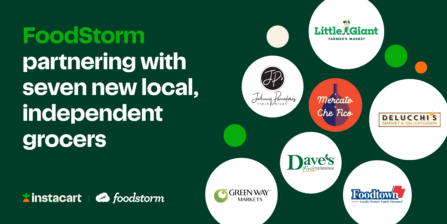
FoodStorm
Helping Local Independent Grocers Streamline Their Catering and Prepared Foods Businesses
Over the past few years, FoodStorm - our order management system (OMS) designed specifically to help grocers manage their deli, prepared foods and catering - has seen remarkable growth. And today, we’re excited to share…...
Apr 24, 2024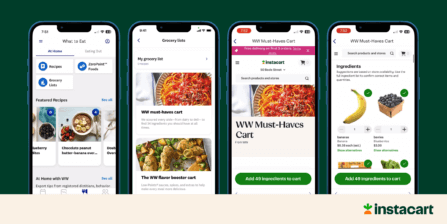
Company Updates
Making Nutritious & Delicious Choices Easier with Instacart and WeightWatchers
New WeightWatchers integration with Instacart unlocks ability to browse ‘Points’-friendly recipes, shop for ingredients, and get everything delivered to your door - now live in the WeightWatchers app In the hustle of everyday life, making…...
Apr 17, 2024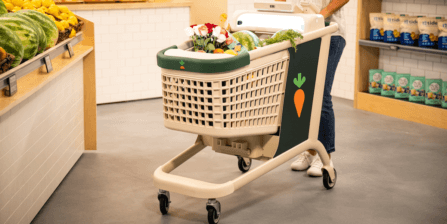
Caper
Why Smart Carts Are the Winning Technology Format for Grocers
One of the most common misconceptions about smart carts is that they only serve as an alternative to self-checkout. However, the real magic behind a Caper Cart, our AI-powered smart cart, is the digital screen.…...
Apr 9, 2024

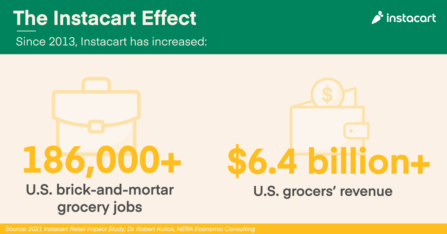 Instacart’s Impact on America’s Grocery Industry, by the Numbers
Instacart’s Impact on America’s Grocery Industry, by the Numbers 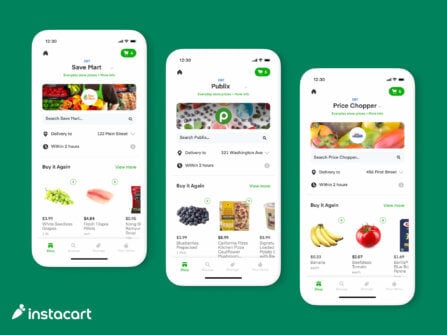 Breaking Down Barriers to Food Access with EBT SNAP Expansion
Breaking Down Barriers to Food Access with EBT SNAP Expansion  Beyond the Cart: A Year of Essential Stories
Beyond the Cart: A Year of Essential Stories 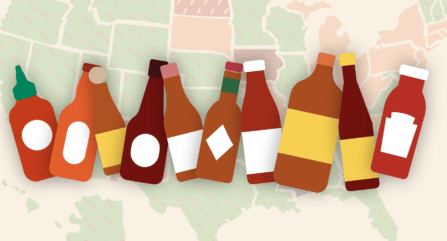 A Hot Take on America’s Favorite Hot Sauces 🌶
A Hot Take on America’s Favorite Hot Sauces 🌶  JuJu Smith-Schuster: What’s in my Cart?
JuJu Smith-Schuster: What’s in my Cart?  Introducing the First-Ever Instacart Emerging Brand List
Introducing the First-Ever Instacart Emerging Brand List 
